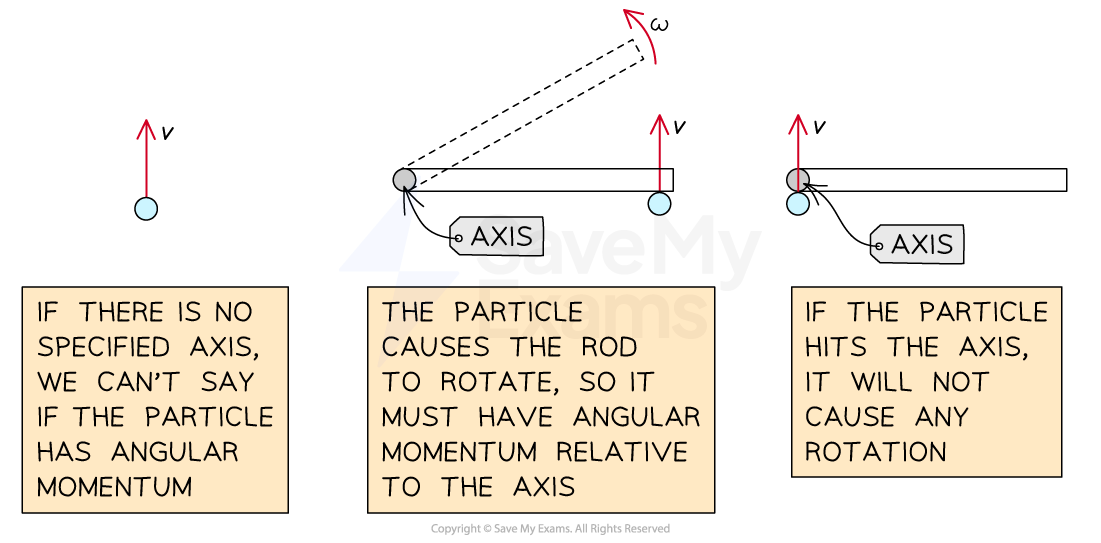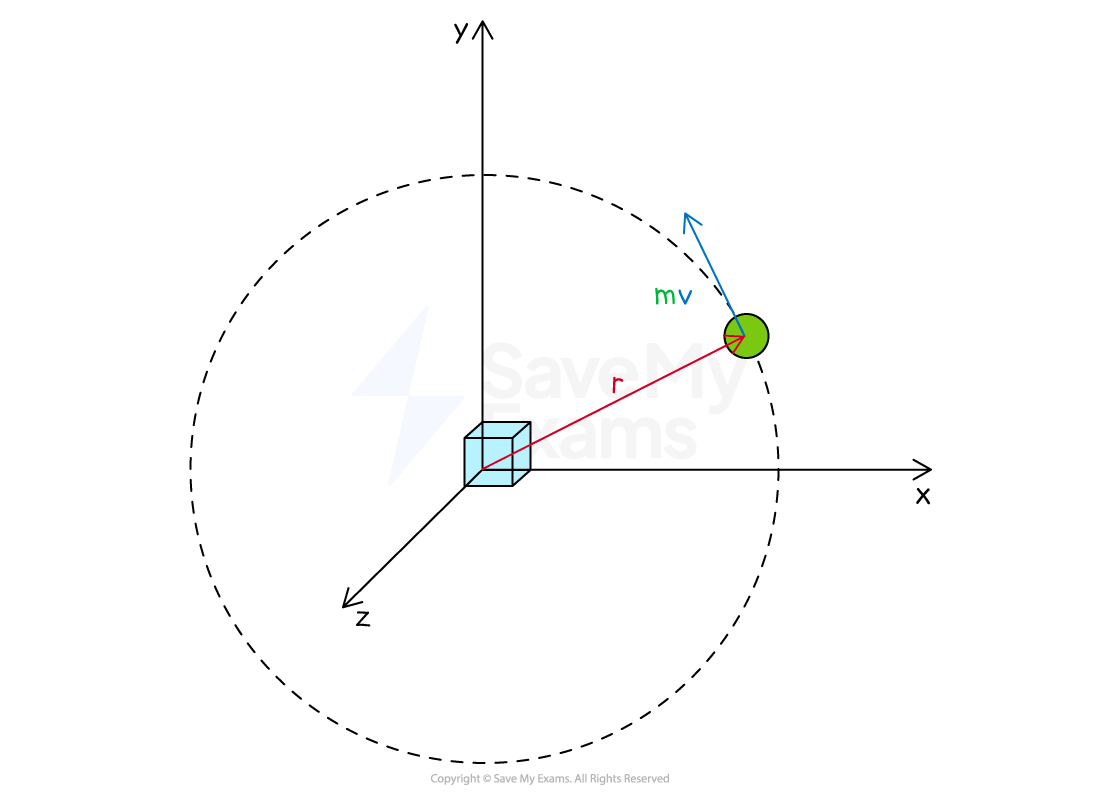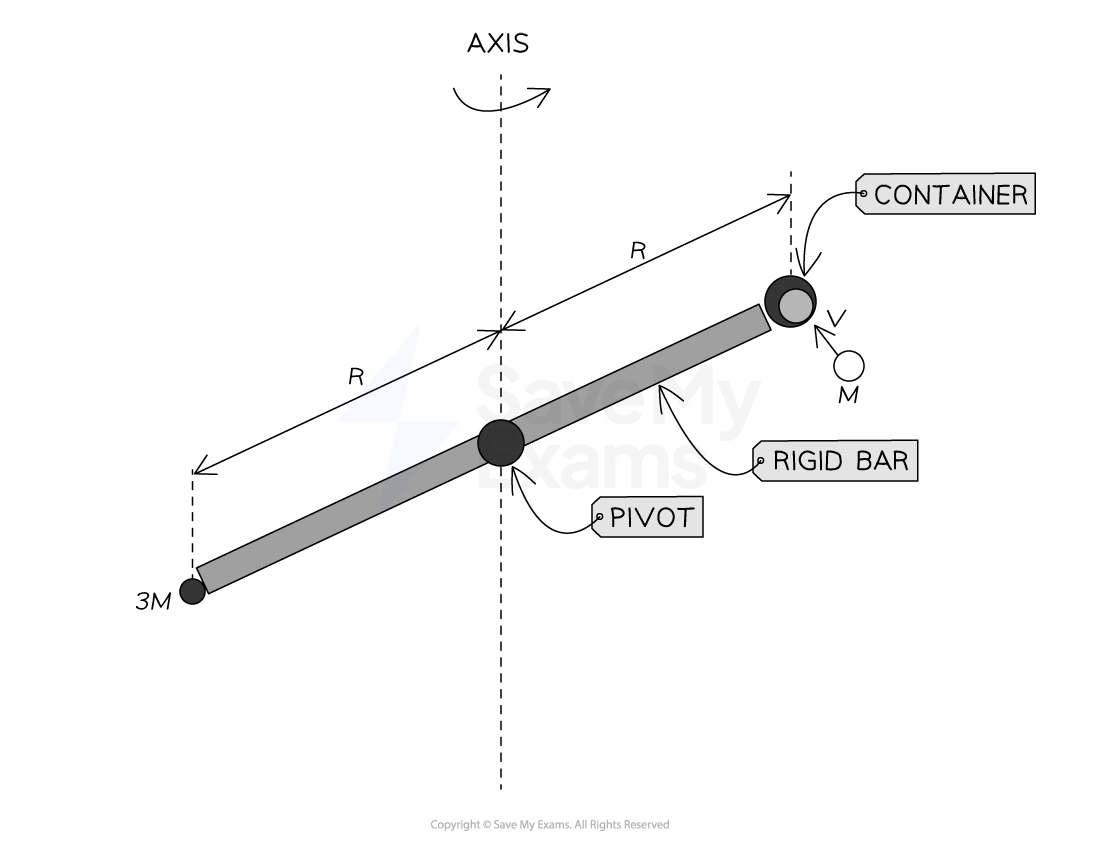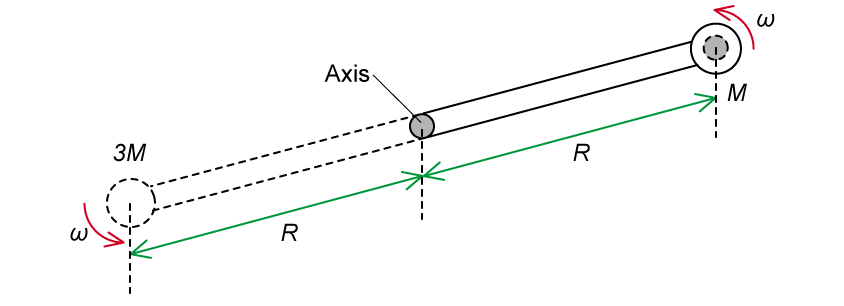Angular Momentum (College Board AP® Physics 1: Algebra-Based): Study Guide
Angular momentum
Angular momentum is the rotational equivalent of linear momentum
The magnitude of the angular momentum of a rigid system about a specific axis can be described by the equation:
Where:
= angular momentum, in
= rotational inertia, in
= angular velocity, in
Angular Momentum of a Particle
Objects traveling in a straight line can possess both linear and angular momentum
The magnitude of this angular momentum depends on the particle's position relative to an axis of rotation
When a particle moves on a line relative to the axis, it will cause rotation and therefore has angular momentum
When a particle moves on a line that passes through the axis, it will not cause rotation and therefore has zero angular momentum
Therefore, an axis can be selected to change an object's angular momentum

The magnitude of an object's angular momentum depends on:
the distance between a chosen reference point and the object
the mass of the object
the linear speed of the object
the angle between the radial distance and the velocity of the object
The rotational inertia of a particle at a distance
from an axis of rotation is equal to:
The angular velocity of the particle is given by:
Therefore, the angular momentum of a particle about a given reference point is:
Where:
= mass of the object, in
= linear speed of the object, in
= distance between the reference point and the object, in
This equation only applies when the axis is perpendicular to the plane of the object's motion
Angular momentum of a particle moving in a circular path

When the axis is not perpendicular, the magnitude of the angular momentum is:
Where:
= the angle between the distance
and the object's velocity
, in
Angular momentum of a particle moving at an angle

Worked Example
A horizontal rigid bar is pivoted at its center so that it is free to rotate. A particle of mass is attached at one end of the bar and a container is attached at the other end, both are at a distance
from the central pivot. With respect to the pivot, the rigid bar has rotational inertia
.
A particle of mass moves with velocity
perpendicular to the rod as shown in the diagram.

The particle collides with the container and stays within it as the system starts to rotate about the vertical axis with angular velocity .
Which of the following expressions correctly represents the angular momentum of the system about the vertical axis just after the collision?
A
B
C
D
The correct answer is C
Answer:
Step 1: Analyze the scenario
Before the collision:
the rigid bar, container, and particle of mass
are all stationary
the particle of mass
moves with linear velocity

After the collision, the whole system rotates with an angular velocity of

Step 2: Eliminate any incorrect answers
The total angular momentum of the system is provided by the particle of mass
and is equal to
The question asks about the angular momentum after the collision, which is also equal to
(due to the conservation of angular momentum)
This isn't one of the options, so, the final answer must be in terms of
This eliminates options B and D
Step 3: Determine the total rotational inertia of the system
The rotational inertia of
the rigid bar is
the particle of mass
is
the particle of mass
is
The total rotational inertia of the system is the sum of all the rotational inertia components
Step 4: Determine the angular momentum of the system
The angular momentum of the system is equal to:
The angular momentum of the system after the collision is:
Therefore, option C is correct

Unlock more, it's free!
Did this page help you?